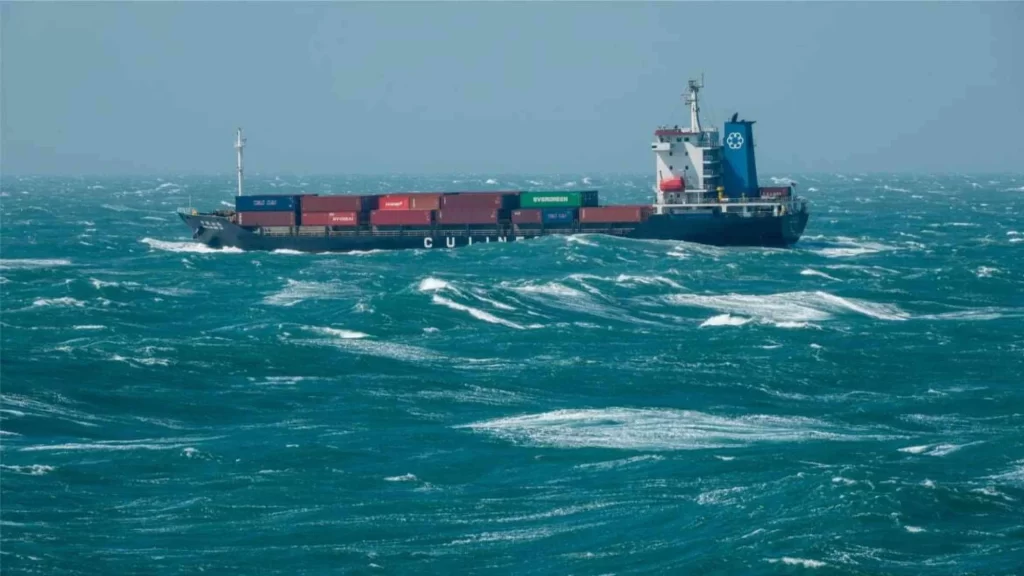Why Are Shipping Container Prices Rising?
Container prices are on the rise due to challenges in the global shipping industry, stemming from disruptions in key maritime passages like the Panama Canal & the Red Sea. If you’ve been considering a shipping container purchase for a while, you’ve likely noticed that container prices are rising and the container market has been anything but smooth sailing. This article explains the impact of the Red Sea Crisis on container costs and what it means for your business.

If you’ve been considering a shipping container purchase for a while, you’ve likely noticed that container prices are rising and the container market has been anything but smooth sailing. That’s because the global shipping industry is facing unprecedented challenges due to recent geopolitical tensions, particularly the Red Sea crisis.
What’s Happening in The Red Sea?
The Red Sea, an important maritime route for global trade, especially between Europe and Asia, has been facing disruptions due to attacks by Houthi militants. These attacks have led to a 42% decrease in the trade volume going through the Suez Canal, which feeds into the Red Sea. As a result, carriers such as Hapag-Lloyd are rerouting Asia-Europe trade away from the Red Sea, with some vessels diverting around the Cape of Good Hope in South Africa.
The detour has caused transit times to increase by approximately 30%, adding 10 to 18 days to the journey. As a result, there is a shortage of shipping containers, leading to a 9% reduction in global container shipping capacity and increased expenses for buying or renting them. Shipping lines and leasing companies now find themselves in a bind: they need more containers to meet demand, but the current routes are not efficient.
Current Market Conditions
1. Container Price Volatility: The container market in China is experiencing significant volatility, with prices changing almost every 48 hours. This price surge is largely driven by the uncertainty stemming from the Red Sea crisis and the resulting geopolitical tensions. According to Container xChange, an online container logistics company, the average prices for 40 ft high cube, cargo-worthy containers in China have already reached around $2,500 to $2,700.
2. Factory Orders and Manufacturing Delays: Leasing companies and shipping lines have responded by placing large orders with container factories. However, these factories are currently operating at full capacity, and the backlog extends into late summer and early fall. Businesses relying on timely container availability may experience delays and uncertainty.
3. China’s Insatiable Appetite for Used Containers: China, the world’s manufacturing hub, has a voracious appetite for used containers. As its economy booms, so does the demand for these steel boxes. But here’s the twist: prices for used containers in China have skyrocketed. The result? A tug-of-war between China and the United States. Containers that once crisscrossed the Pacific are now staying put in China, leaving the US with reduced inventory and higher prices.
What Does This Mean for your Business?
The current market conditions have several implications for individuals and businesses that rely on shipping containers:
1. Supply Chain Disruptions: Businesses relying on just-in-time inventory management face a precarious situation. Longer transit times mean containers are spending more time at sea, affecting supply chains worldwide and causing delays in getting goods to market.
2. Cost Escalation: Freight costs account for up to 20% of cargo value. With container prices increasing, businesses face higher shipping expenses. Profit margins shrink, and some companies are forced to pass these costs on to consumers. The ripple effect extends beyond shipping companies—everyone pays the price.
3. Inventory Shortages: China’s insatiable demand for used containers has left the US with a shortage. Businesses relying on these containers find themselves competing for scarce resources. Inventory management becomes a delicate balancing act. Will there be enough containers to meet demand? Or will businesses face empty shelves and disappointed customers?
As the Red Sea crisis continues and demand for ocean freight remains high, container leasing rates and prices are expected to keep rising. With new container manufacturing capacity not coming online until later in the year, supply constraints will persist. Now is the time to lock down your box at a reasonable price.
Our platform makes it easy for anyone to buy containers in the US. Simply choose the size and condition of the shipping container(s) you need and we will deliver it within 7 business days!
